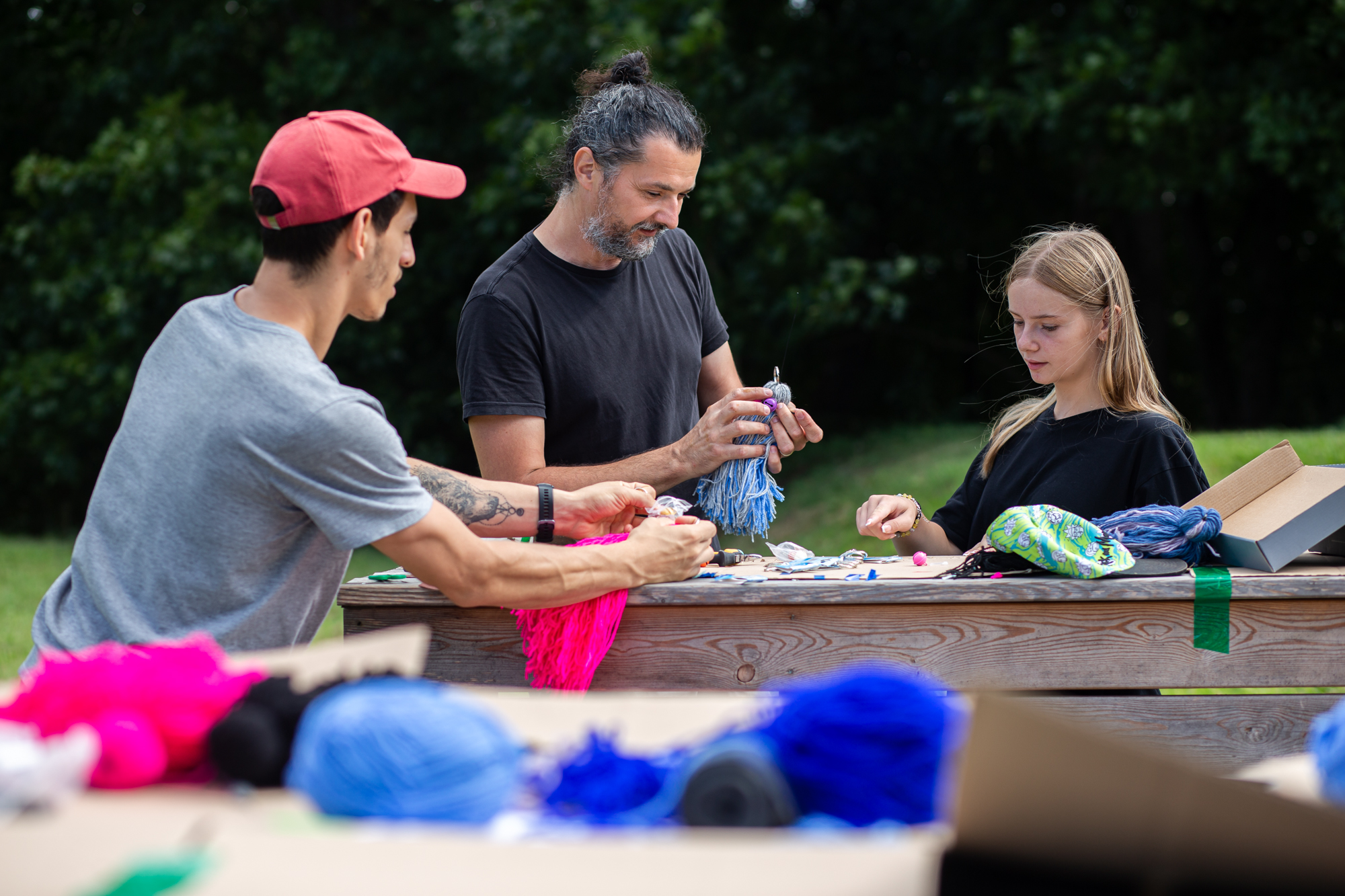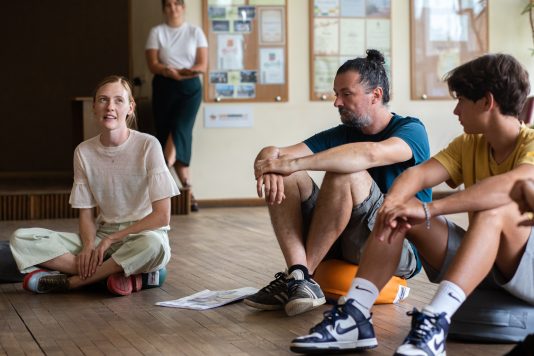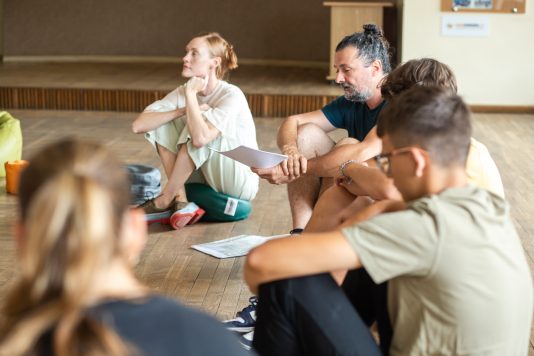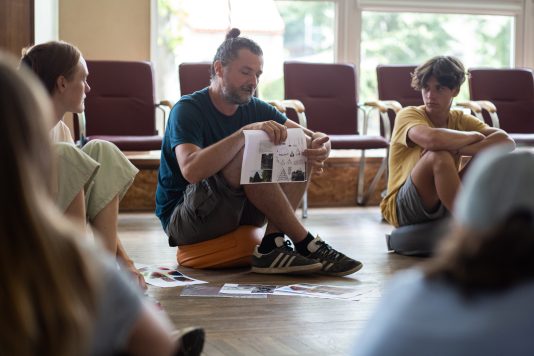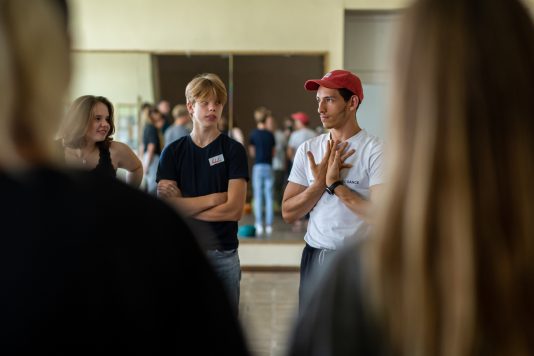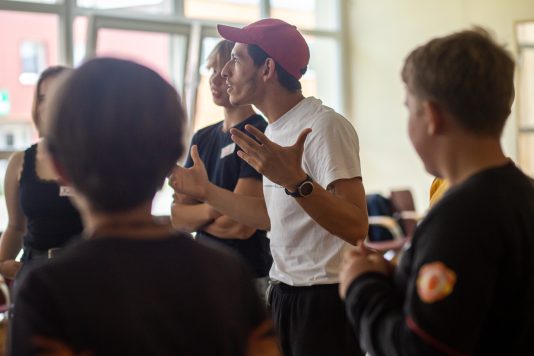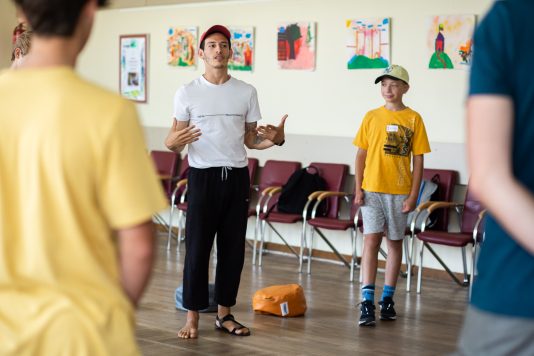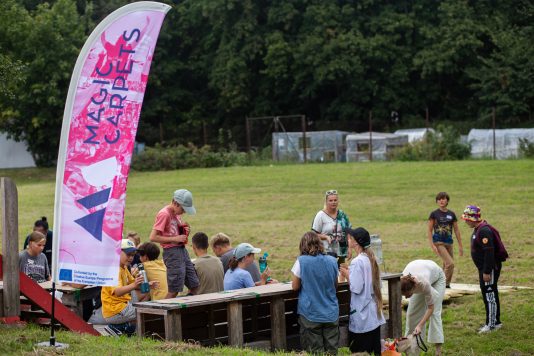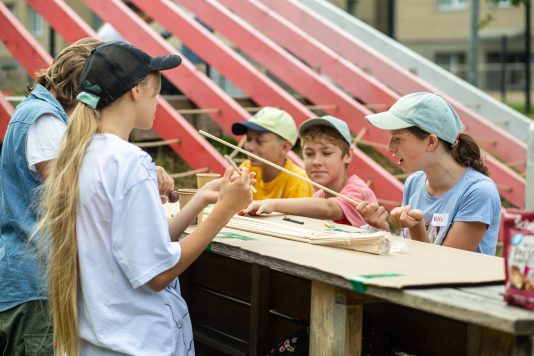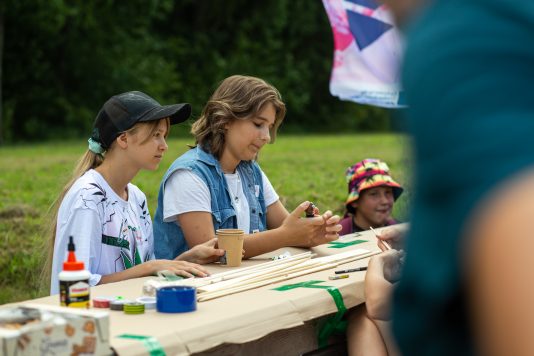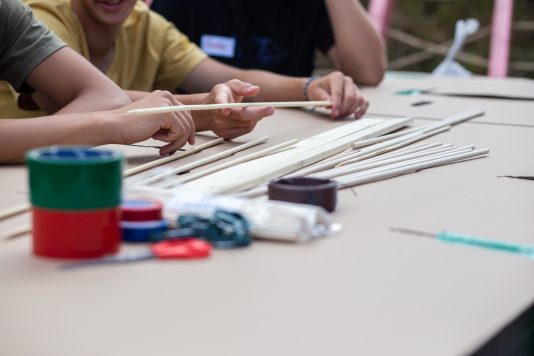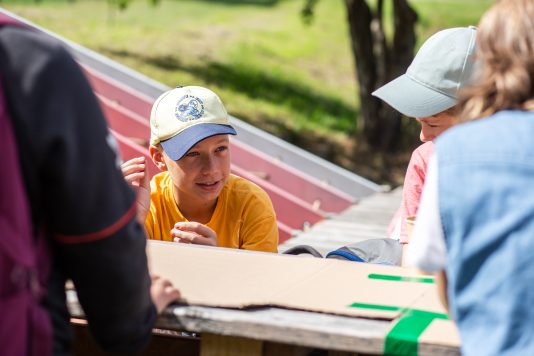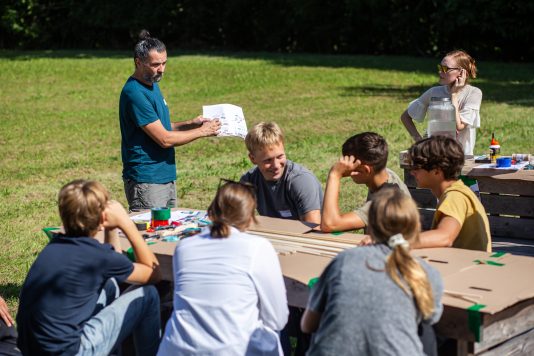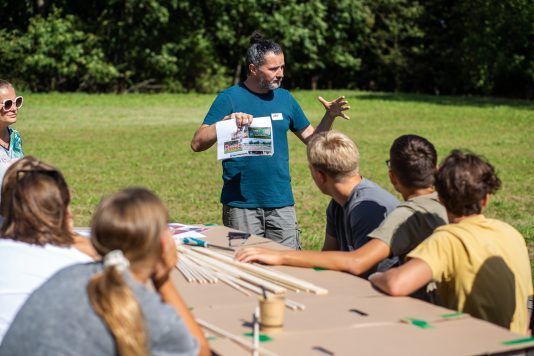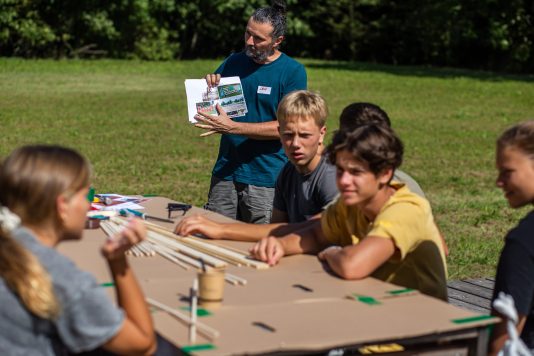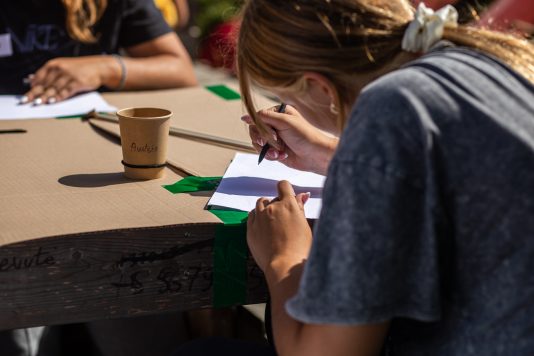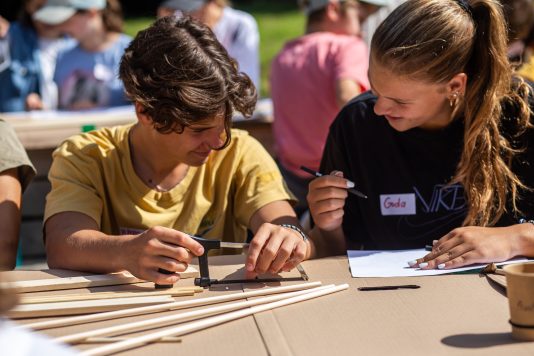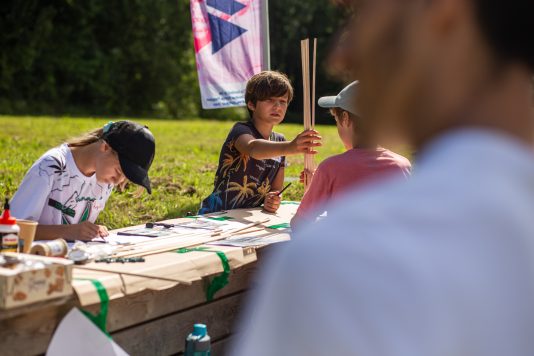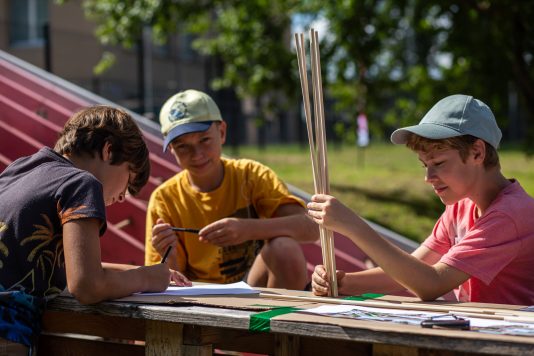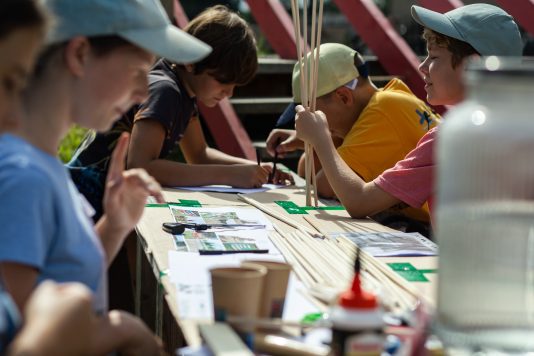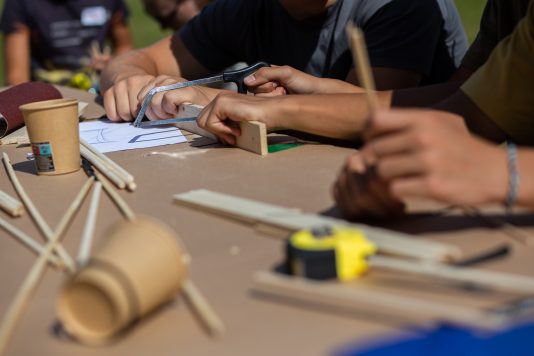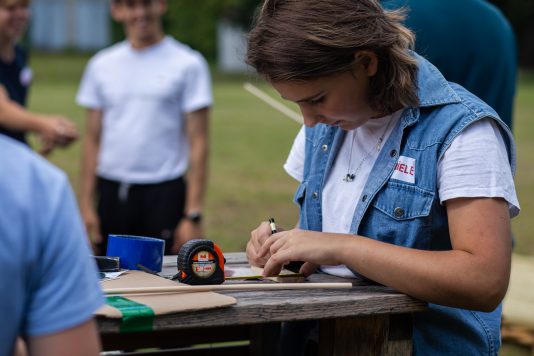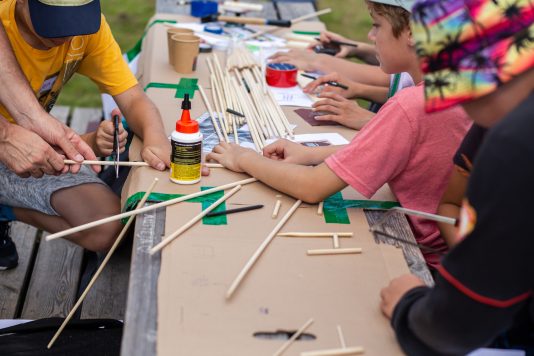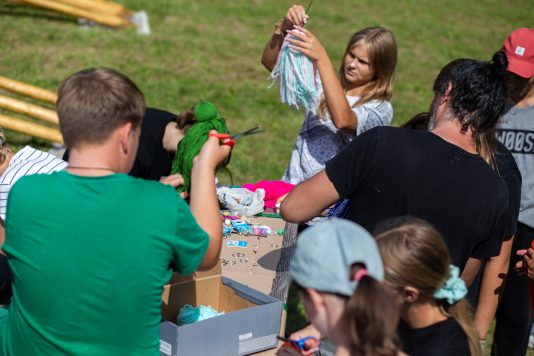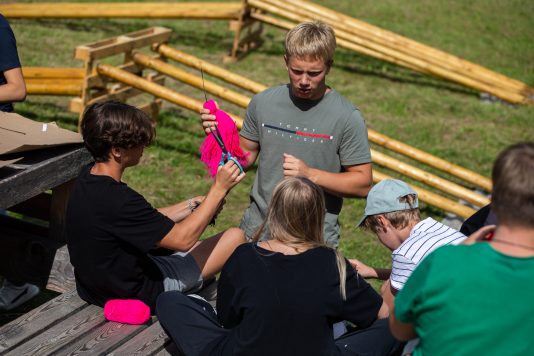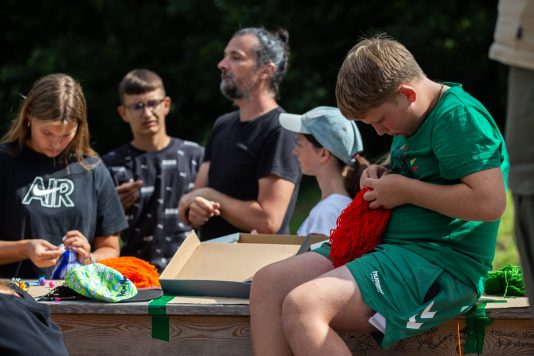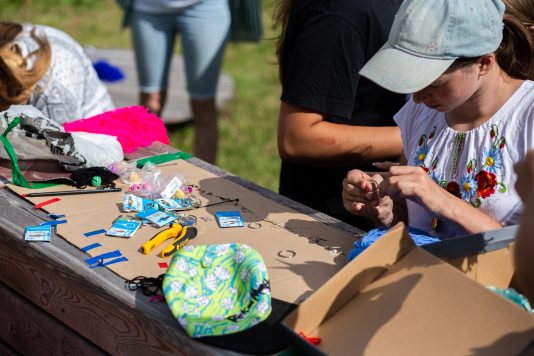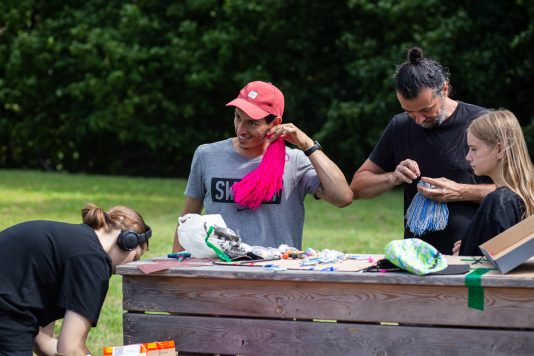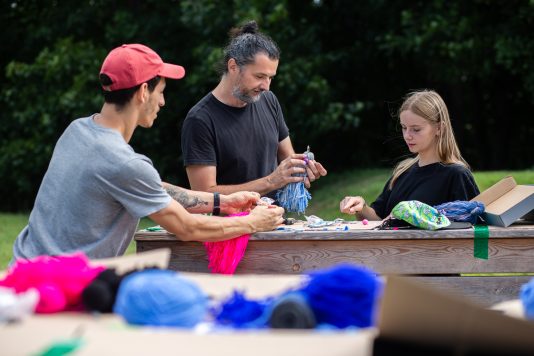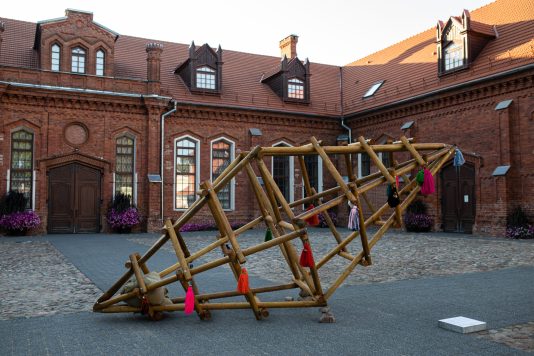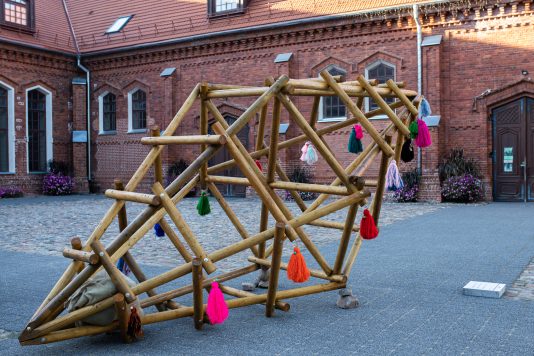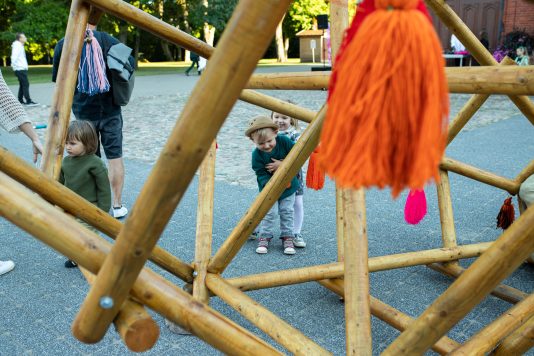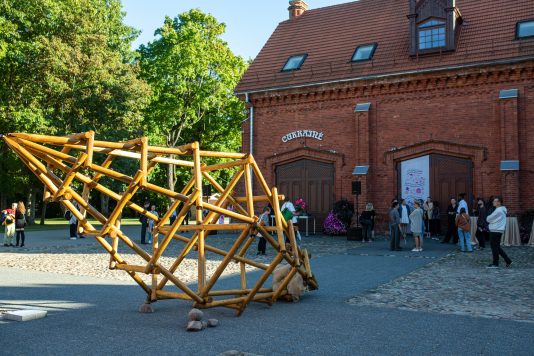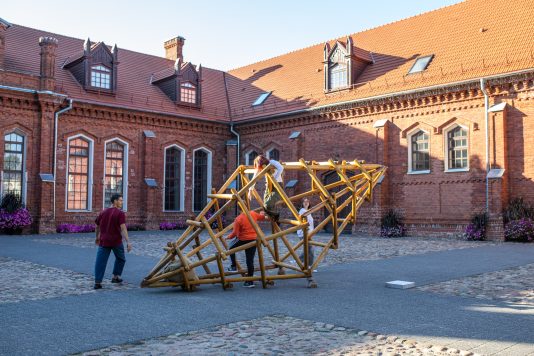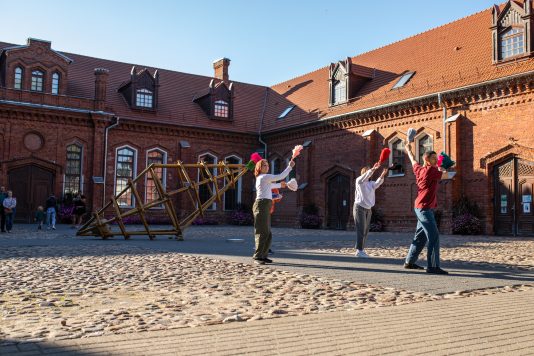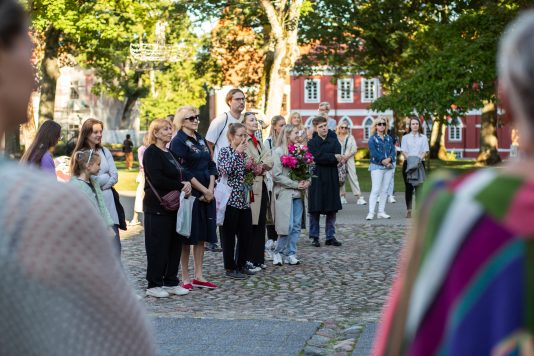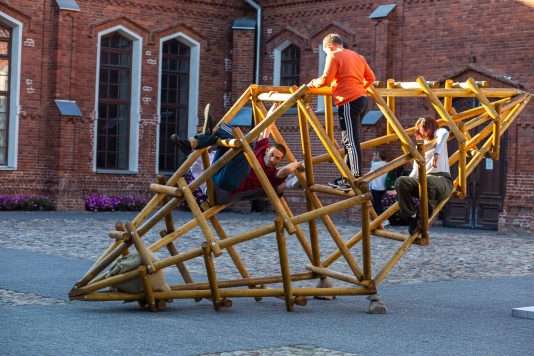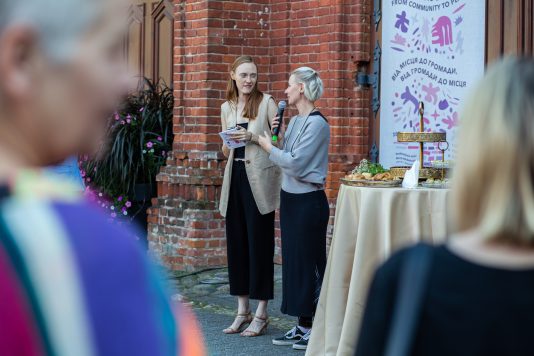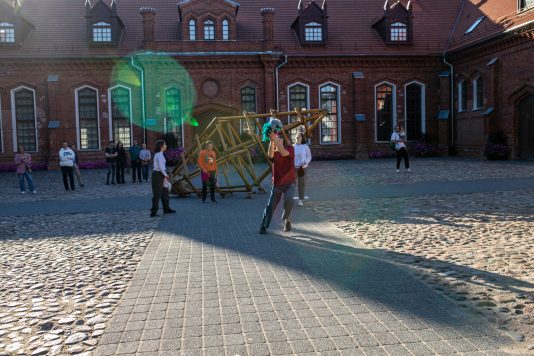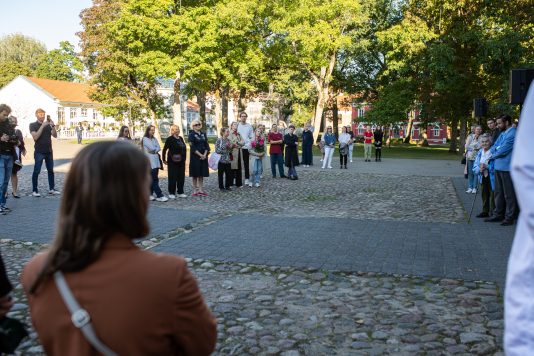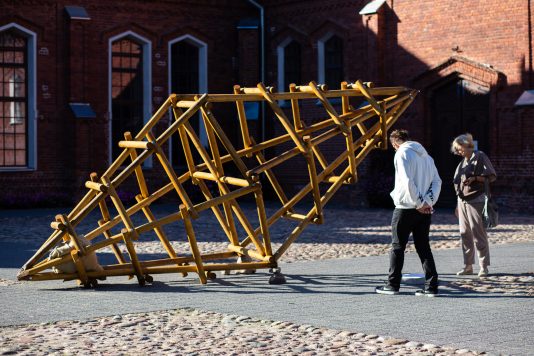Dan Vezentan, The Hay Collector (Harvesting Structure No. 3), 2023
In the Kaunas District, there is a special place called Raudondvaris, adorned with numerous trees and a river flowing alongside. It boasts a long, rich history and a red-brick manor built in the 17th century, surrounded by a beautiful park full of flowers. Despite its proximity to Kaunas city centre, Raudondvaris exudes the calm and cozy atmosphere of the countryside. Most importantly, the people living in Raudondvaris understand the true meaning of community, adding a unique and special value to the place.
Right here, at the Raudondvaris Arts Incubator situated within the Manor’s territory, Kaunas Biennial organized an exhibition that showcased the activities of the Magic Carpets platform. The event presented the outcomes of international artists’ residencies in Kaunas and Lithuanian artists’ residencies abroad, covering the period from 2022 to 2023. This exhibition complemented the 14th edition of Kaunas Biennial Contemporary Art Festival and was titled “From Place to Community. From Community to Place.” The main focus was on reflecting on the ‘people-space’ relationship: space’s influence on people and people’s influence on space through creative placemaking approaches. Creative placemaking practices inspire people to collectively reimagine and reinvent public spaces through various forms of art, strengthening the connection between people and the spaces they share. Raudondvaris provided the perfect setting for exploring these topics.
As the exhibition was planned to be opened in Raudondvaris, it was crucial to involve the local community in the project. This community is known for being active and motivated to participate in cultural activities. A notable example of community activism in Raudondvaris was a 2021 project under Kaunas – European Capital of Culture 2022 programme. Local architect Algimantas Grigas gathered children from Raudondvaris to help create and install a furniture piece that could serve as a public leisure space for youngsters to meet. The previously unused grass field next to the school became a popular spot over the years. However, it became worn-out and forgotten, prompting the community to express a wish to renew and reactivate it in a creative way, promoting this open space for the young people of Raudondvaris. This is where the Magic Carpets platform had the opportunity to engage with the Raudondvaris community and provide assistance. Collaborating with Raudondvaris Culture Centre, a summer camp for the teenagers of Raudondvaris was organized, becoming part of Magic Carpets’ artistic residencies.
When the artist from Bucharest, Romania, Dan Vezentan, visited Raudondvaris for the first time, he was captivated by the unique architecture of the place. The old wooden private houses surrounded by apple trees and the wooden fences standing not far from the red-brick Raudondvaris Manor complex built in neogothic style inspired Dan. Growing up in an agriculture-based environment in Maramureș, northern Romania, surrounded by feeding machinery, technical husbandry manuals, and animal anatomy books, Dan’s works often explore themes of households, animal feeding, watering systems, or food stocking systems. Horses are a recurring theme in his artistic practice, and the coincidental connection with the location of the Magic Carpets exhibition, organized in the Arts Incubator, which is a former horse stable of the Raudondvaris Manor, led Dan to the decision to work with horses-related topics for the Magic Carpets residency in Kaunas.
For the community of youth participating in the summer camp, the artist proposed creative ideas on how to introduce the topic of horses to the teenagers of Raudondvaris, encouraging them to delve deeper into the history of the place they live in and to get to know the artist and his practice better. Dan spent the whole week with the teenagers of Raudondvaris at the open leisure space, giving the area new collective memories and experiences.
The first days of the workshops were dedicated to creating horse jumping fence models out of little wooden sticks and decorating them with colourful tapes. The creative forms of the fences resembled the architectural shapes of the Raudondvaris Manor building. On the other days, children created tassels out of various colours of wool threads and melodious . In the old times, these kinds of tassels were worn by horses on their heads to disturb bad spirits and help avoid insects. For the youngsters, it was a fun process of choosing their own colours, picking their own cut shapes for the tassels, which were later used in the final sculpture presented at the exhibition “From Place to Community. From Community to Place.” At the same time, Dan started preparing wooden material for the final artwork. Three-meter-long pine wood poles were always in the location of the community activities, and some of the community members proposed to help the artist varnish the wood and add their touch to the artwork dedicated to their place and community. During the workshops with Dan, a beautiful example of the creative atmosphere impact was noticed – while creating the little horse jumping fence models, children started to play with the pillows that were used to sit on the grass. The real-size jumping fence was made out of pillows and a stick, and the workshop ended up with youngsters jumping the fence and having a lot of fun acting like horses themselves.
The final artwork of the residency creates a dialogue with both spaces: the open leisure space in the grass field next to the primary school of Raudondvaris and the square in front of the Arts Incubator, the former horse stables of Raudondvaris Manor. It is a sculpture called The Hay Collector (Harvesting Structure No. 3), which is a utopian adaptation of a hay harvesting tool, part of a family of harvesting structures that Dan has been developing in the last five years. The shape is inspired by a hay-drying tripod, made from wooden beams, that can be found in rural areas of Eastern Europe and Romania. The structure is decorated with colourful tassels for horses made by the youngsters during the creative workshops and hung on the sculpture as part of a performance created by the artist Adrian Carlo Bibiano together with Raudondvaris children during the opening of the exhibition. This piece of art invites people to reflect on the history of the place and, at the same time, to have fun, imagining it not only as a harvesting tool but also as a play tool and a symbolic unity between the community, place, and art.
The sculpture was built with the generous help of Motiejus Patinskas, Vaidas Bulota, Jonas Malinauskas, Viltė Rupšytė, Simas Vaitkevičius, Rugilė Rudelevičiūtė, Osvaldas Sideravičius, Gabrielė Mačiulaitytė, Patricija Zubavičiūtė, Rapolas Kazlauskas, Goda Staniulytė, Marta Starevičiūtė, Mykolas Starevičius, Vilius Račinskas, Austėja Staniulytė and Adrian Carlo Bibiano.
Curator of the project Brigita Bareikytė
Thank you to all who contributed to the realization of this project: Gintarė Žaltauskaitė, Vilma Bražiūnaitė, Saulius Valius, Roberta Grigaliūnaitė, Ignas Andriuškevičius, Dovydas Gaulė, Irmantas Kuskys, Džiugas Žemaitis, Marius Paplauskas, Aistė Varkulevičiūtė, Kristina Adomaitė, Laura Kanapienytė, Agnė Poderytė, Gerda Linkevičiūtė, Diana Povilaitus, Raluca Doroftei, Algimantas Grigas, Jolanta Zizienė.
Partners: META Cultural Foundation, Raudondvaris Manor, Raudondvaris Cultural Centre, Kaunas District Municipal Public Library, Kaunas District Municipality.
Project funded by: European Union and Lithuanian Council for Culture.
Curatorial text by Brigita Bareikytė

